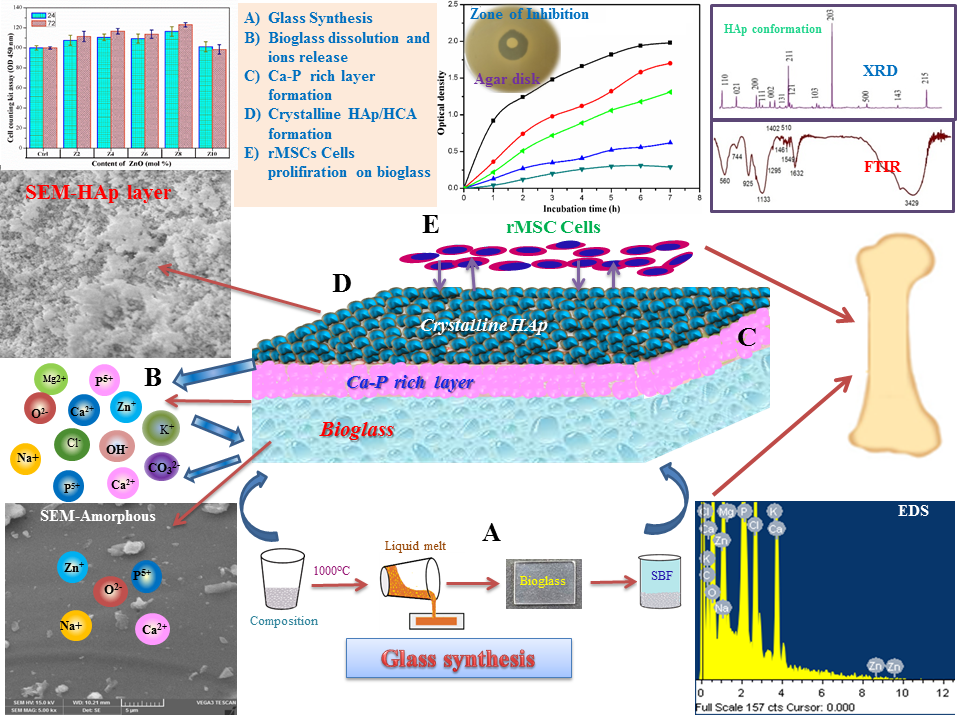

Dr. Venkateswara Penugonda
Though you might never have heard of it, ‘bioactive glasses’ are unique materials that can develop strong chemical bonds with the main structural protein found in skin and other connective living tissues. Because of this they are widely used as biomaterials in engineering for the repair and regeneration of damaged soft and hard bone tissues. Phosphate-based bioglasses have additional advantages (e.g. their solubility, high biocompatibility and low melting temperature) which make them particularly suitable to be used as biomaterials. For example, when phosphate-based bioglasses are immersed in human blood plasma known as simulated body fluid (SBF) a rich layer of calcium phosphate hydroxyapatite (HAp) is formed which confirms the in vitro bioactivity of the material.
In a 2020 paper recently published in the journal Materials Dr Penugonda Venkateswara Rao (Department of Physics), and colleagues establish that the inclusion of Zirconia (ZrO2) - which is one of the common trace elements present in the human body - in the bioglass could be exploited for stimulating bioactivity. Their research shows that both the biological activity and the mechanical properties (hardness) can be improved. To show this they prepared silica free zinc calcium phosphate glasses mixed with small quantities of ZrO2 which were analysed using advanced techniques (e.g. differential thermal analysis, X-ray diffraction, Fourier transform infrared spectroscopy (FTIR), and other techniques), before and after immersing in the simulated body fluid. Their results revealed the formation of a thin HAp layer over the sample surface after incubation in SBF which was found to thicken with longer incubation time. They also found that the ratio of calcium and phosphorous was around 1.67, which is almost equal to bone composition, and an ability to produce bone-like apatite structures on the surface.
All of these findings, though in vitro, confirmed that ZrO2 incorporated phosphate glasses exhibit high bioactivity which are relevant for bone tissue engineering applications.
To read the article check out: Materials | Free Full-Text | Influence of ZrO2 Addition on Structural and Biological Activity of Phosphate Glasses for Bone Regeneration (mdpi.com)
Schematic representation of the present work

Published on 23 Dec, 2020